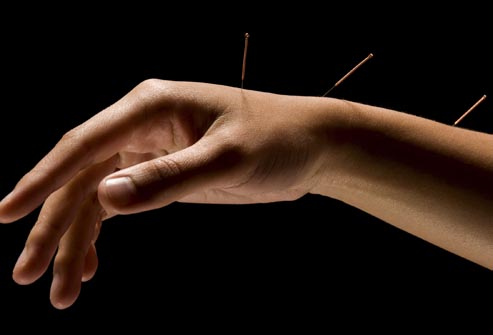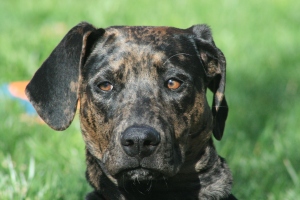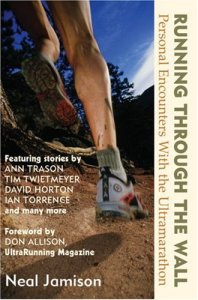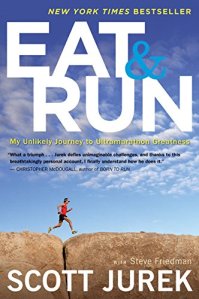
It’s a strange sight to awaken from a nap to the sight of 12 needles sticking out of your arms, legs, and feet, but that’s what happened to me last Thursday night.
My wife had gone to a nearby acupuncture clinic earlier in the week, and on her recommendation I decided to try it myself. Not only was I interested in the potential pain-relieving properties of the practice, but also how it affects the body’s energy, or chi. We are, I believe, beings of energy and I wanted to know if and how my body would respond to it.
There was just one small problem: I’m scared of needles.
It’s officially called Trypanophobia.
But I felt more curious than fearful on the drive over to the clinic, as I was hoping the acupuncture could alleviate some foot pain that has kept me from running for a week. I’ll try anything to get me running again.
The clinic is a cooperative clinic, meaning that they provide services at a reasonable out-of-pocket cost in exchange for sharing a large, dimly lit room with other patients. I filled out the paperwork and was in a good mood until the attendant led us into the back room, passing several other patients along the way. That is when The Fear came.
My wife and I found two recliners towards the back of the room, and I tried to relax my spinning mind as the attendant came over to us. The room was pleasantly warm and the recliner quite comfortable; nevertheless, my heart was racing and I felt a cold sweat trickling from my armpits.
My most recent experience with needles was almost exactly a year before. I’d injured myself on the job and had to get a tetanus shot for a small cut in my hand. It had been ten years since my last one anyway. That shot in my left bicep had left me queasy and light-headed, though to be fair, I hadn’t eaten in 7 hours.
Similarly this time, I hadn’t eaten in about six hours and couldn’t seem to quell the quiet fears that kept welling up in my head. My wife looked much more relaxed, as her previous experience had been a positive one.
The attendant approached her first, and I fought with all my might not to look over and watch. Instead, I tried to breathe deeply into my belly and listen to the Indian music playing softly in the background. My heart was still racing.
I was relieved when the attendant, a nice lady named Gretchen, came over to me. I was ready to get this over with. She went over my questionnaire and we had a brief chat, then she went to work. She went over to the right side of my body and turned my right hand upwards. I barely felt the first few needles that went in, one on my hand and two or three in my lower forearm. Then she moved to the crook of my arm and started gently probing the inside of my elbow with her fingers.
That’s when I started to feel nauseous.
She placed two needles somewhere near my elbow crease, and they hurt far more than the first ones. I imagined a needle going in the vein and blood squirting out, but thankfully that didn’t happen because if it had, I would’ve definitely passed out. As it were, I was barely hanging on to consciousness, which is both a sickening and oddly curious state to be in (I’ve only passed out once from the sight of blood and that was in the operating room of a small clinic in rural Peru, a story worthy of its own post).
Several more needles went into my lower right leg and foot, then onto the other side my body. A needle went into the center of my left foot, right on top of the tender spot. Pain instantly radiated out to all of my foot, but quickly subsided.
The nausea was subsiding as she put a few more needles in my left leg. But, she stopped for a moment to think and reached over to place a needle behind my right knee—another quite sensitive area—and another flash of dizziness hit me.
Thankfully, she didn’t see fit to put any needles in my left elbow, a fact for which I’m forever grateful. The last needle she placed on me was in the center of my forehead, which immediately produced a warm sensation. Perhaps it was light-headedness, but by then I felt a touch giddy.
Before Gretchen left, she placed a small heat lamp over the tender spot on my left foot, which felt quite nice. She helped adjust my right arm, as I was having trouble finding a comfortable position for it. Interestingly enough, the pain and discomfort had been replaced by a strong feeling of heaviness. I felt like Scott Glenn after the infamous needle treatment in the great movie The Right Stuff.
As Gretchen moved to leave, she said she’d check on us about every ten minutes, and to signal her when we felt ready to go. She advised us to stay at least forty minutes. It was 6:45 p.m.
The Fear was still with me, but was quickly leaving. Within ten minutes my heart rate dropped enough to allow me to drift into a light sleep. All the tension and pain seemed to have left my body.
When I opened my eyes again, it was 7:20 p.m. The other two patients had left while I was drifting in semi-consciousness. The sight of the needles in my body was briefly startling. It reminded me of a fall I took into some cholla cactus while climbing an unnamed peak in Organ Pipe Cactus National Monument in 2002, though I had far more cactus needles in me then, than acupuncture needles now.
I did a small test by wiggling my left foot, and a small sting of pain not only shot out through my foot, but also ran directly to my jaw. Perhaps I was unconsciously clenching my teeth when I did it. I was startled, but satisfied by my little experiment. I noted that my forehead still felt warm. Looking over at my wife, she appeared to be unconscious still, so I closed my eyes once again.
When Gretchen appeared at 7:40, my wife signaled her first, and thus began the needle removal. When she got to me, she started on my left side and worked her way to the right. Thus, the last two needles she pulled were the ones in my right elbow. Again, they hurt more than any of the others, but they failed to produce any spurting blood.
As Gretchen walked away, I noted that she had missed one last needle in my left forearm. Given the small size and low light in the room, I understood why it was hard to see. She gently pulled it out, leaving me needle-free. I was greatly relieved.
As it were, I felt in no shape to drive, but luckily, I didn’t have to. I felt as if I were surrounded by a thick layer of cotton. I didn’t feel euphoric or especially good, but just more sensitive and slow. I shivered on the brief car ride home.
That’s when the euphoria hit.
As my wife and I stood in the kitchen relating our experiences, I had a wonderful feeling of clarity and energy. The cotton lining around me had left. My energy had certainly changed.
Because I had an early start at a new job on Friday, I didn’t sleep that well. However, even though I only got about 6 hours of shut-eye, I felt remarkably clear-headed and energetic. I’m a morning person, anyway, but I felt on all morning.
I still had a touch a pain in my left foot and still had a fair bit of soreness in my legs from the previous days’ workout, but overall I felt sharper and clearer.
My verdict on the acupuncture experience is that there is something to the pain-relief claims for it, as well as some potential change in the body’s energy. I realize some bias going into it, having heard similar claims before I tried it.
In addition, it helped me realize that I could at least handle the source of one of my major phobias. A few more times and who knows, I might be able to get my blood drawn without having to lay down for twenty minutes afterwards…









 3.
3. 


